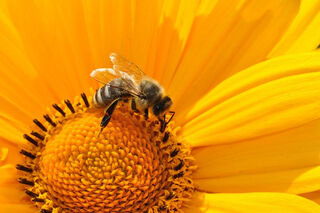Animal Behavior
Pioneers, Mentors, and Diversity in Animal Behavior Science
New research on diversity and inclusion in the field of animal behavior
Posted June 22, 2020 Reviewed by Lybi Ma
Mentors and awards can really make a difference. That’s one lesson from a new paper by Dr. Danielle N. Lee (Southern Illinois University) that looks at the history of diversity within the Animal Behavior Society. Another finding is of the important contributions made by under-represented minorities to the field of animal behavior.
Amongst early contributions highlighted in the paper are those of Charles Henry Turner (1867–1923) who, in 1907, was the first African American to get a Ph.D. (in Zoology) from the University of Chicago. After graduation, and despite many scientific publications, he was unable to find work at a university and instead taught at a high school for Black children in St. Louis, MO. Nonetheless, he continued to do research in his spare time. Among many other ground-breaking discoveries about insects (and the methods used to study them), he found that when ants are returning to their nests, they move in a circle pattern that French colleagues named after him: ‘tournoiement de Turner’, or Turner circling. Turner was also involved in the early civil rights movement of the time.

In the early years of animal behavior, there were also important contributions from Indigenous scholars, including Tichkematse or Squint Eyes (1857–1932, Cheyenne), a naturalist who worked for The Smithsonian Institution for a time and went on many expeditions, and Dr. Susan L. Picotte (1865-1915, Ponca, Omaha) who, in 1889, was the first Native American in the US to complete a medical degree. Picotte was also an activist who ultimately set up her own hospital for Native Americans. However, the paper notes that many contributions made by Indigenous people are lost to history as they were typically not included as co-authors on papers even when they took part in expeditions.
The Animal Behavior Society was founded in 1964, and some of the early scientists worked hard to support diversity initiatives within the discipline. Dr. Lee writes that,
“They deserve recognition as champions of diversity and inclusion in science, well before these issues had become socially salient and accepted.”
As well as their work in animal behavior, these scholars also worked for social justice, to mentor BIPOC students, and to point out scientific errors in work on genetics and race. Their names include Ethel Tolbach (1921–2015), Jerry Hirsch (1922–2008), and Howard Bern (1920–2012). Bern was the mentor or advisor of several scientists from under-represented minorities, including Lovell A. Jones (a molecular endocrinologist, African American), John Matsui (a behavioral biologist, Japanese American), Frank Talamantes (1843–2018, an endocrinologist, Mexican American), Tyrone Hayes (endocrinologist, African American), and Zuleyma Tang-Martínez (animal behaviourist, Venezualan American).
When Zuleyma Tang-Martínez became president of the ABS in 1993, she used her position to talk about the lack of diversity within the society. The ABS’s Diversity Award was set up by her in 1992 and provides bursaries to support students from under-represented minorities to attend the Annual meeting. Another award is also important to mention: the Charles H. Turner award, which was set up in 2002 to assist undergraduates to attend the Annual meeting. The award was created by three women from under-represented minorities (Tang-Martínez, Peggy Hill (Cherokee) and Emilia Martins (Brazilian American)).
The paper also lists scholars from the 1970s-2000s, when the ABS was trying harder to recruit women and people from under-represented minorities, as well as more recent scholars who are the younger generation of BIPOC academics in this field, along with their advisors and sub-discipline. Dr. Lee, herself an African American scholar who studies rodent ecology, was advised by Tang-Martínez. Lee also gives a nod to the graduate students and postdoctoral scientists who will be the next generation. Because the field is still not that diverse, she writes that many of them may face the burden of being the only BIPOC in their department.
Of the people who worked to make animal behavior science more inclusive, many of them had had experiences that led to their commitment to equality and diversity. Lee writes,
“In both medicine and in ecological, behavioural and evolutionary sciences, it seems that individuals who had cultural experiences with injustices, a commitment to equality, and in some cases also proximity to whiteness/majority status were among the leaders able to raise attention and be heard when these issues arose. With time and perseverance, as in some cases teaching primarily by example, they were able to bring conversations or policies about fairness, diversity, justice and ethics to mainstream science.”
The awards from ABS have supported many students, and particular mentors have shown leadership in supporting and encouraging individuals from under-represented minorities.
As well as revealing exclusion when it occurs, Lee writes of these scholars,
“They also can expose research blind spots – from specific questions that are not being considered and alternative interpretations of data, to methodological innovations (tools, techniques and hacks to collect data), to engagement (who does science, who gets credit for expertise, public outreach, and collaborations) as well as ethical approaches to doing science (labour and fair compensation of trainees, staff scientists and field and laboratory research assistants) – these are the important contributions of scholar activists.”
Dr. Lee’s paper highlights the important contributions made to the field by BIPOC scholars as well as ways in which diversity, inclusion, and social justice can (and have been) fostered.
References
Lee, D. N. (2020). Diversity and inclusion activisms in animal behaviour and the ABS: a historical view from the USA. Animal Behaviour: 164(273-280). https://doi.org/10.1016/j.anbehav.2020.03.019




